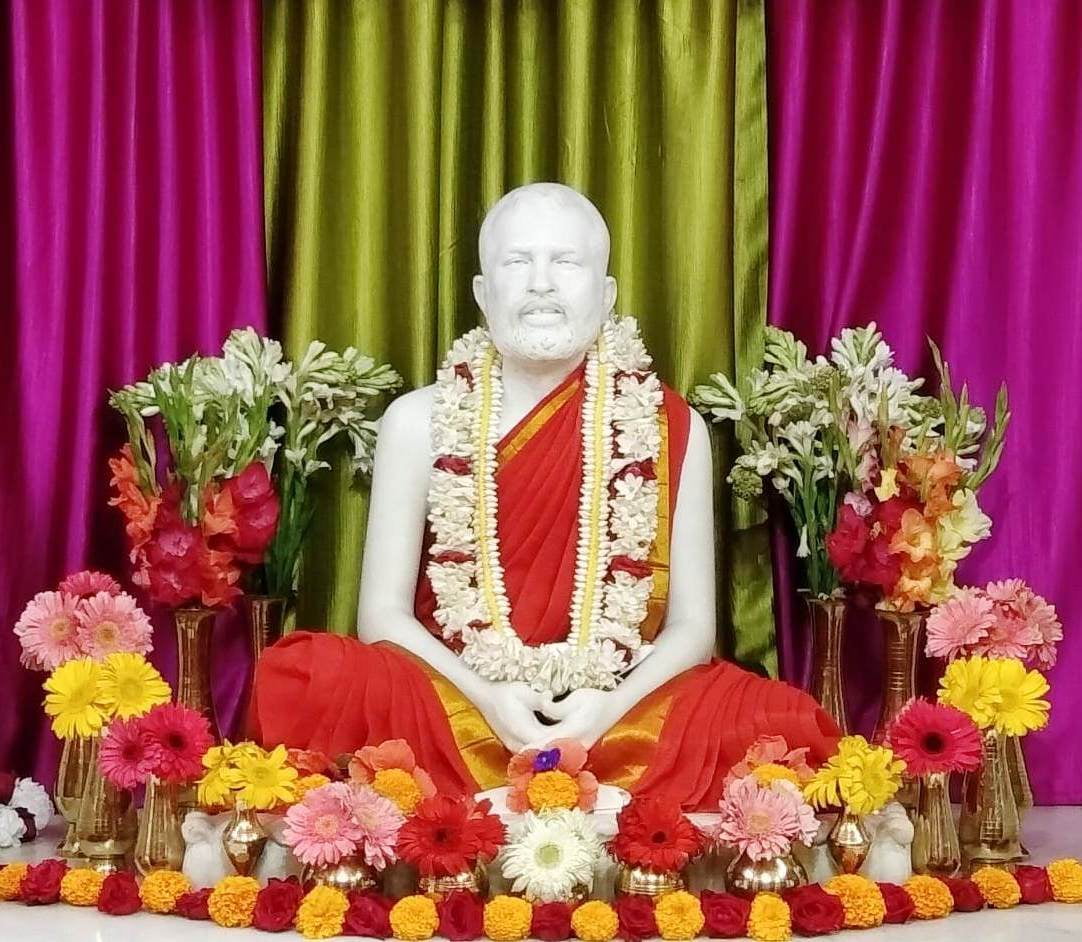History and Significance

The villages of Kamarpukur, Sripur and Mukundapur in West Bengal, stand so close to one another in the shape of a triangle at the junction of the districts of Hooghly, Bankura and Medinipur, that they have become known from very early times as different parts of the Kamarpukur village. The name of Kamarpukur became prominent, probably because the local landlords had lived in it for many generations. It is situated in the Arambagh Sub-division of the Hooghly District. Manik Raja, a well-to-do person, lived in the village of Bhursubo at about 2 km north of Kamarpukur. The renowned tanks of Sukhasayer and Hatisayer excavated by him as also the mango-grove, now almost extinct, in the nearby meadows, testify to some of his noteworthy contribution. Holy Mother Sri Sarada Devi was born at Jayrambati about 5 km west of Kamarpukur. On the western border of Kamarpukur, the canal Bhutir-Khal flows in a zigzag course from the north to the south and joins the Amodar river which flowed by the side of Jayrambati Two cremation grounds called Budhui Moral and Bhutir-Khal lie on the north-east and north-west of the village respectively. Along the eastern border of the villages a wider road runs from Barddhaman (about 53 km from Kamarpukur) to Puri in Orissa. To the south-east are the ruins of Fort Mandaran and the ancient temple of Saileswara Siva, which bear witness to the prosperous days of the Pathan rulers. About 50 km to the east, is the famous temple of Tarakeswar Siva, which is connected with Kamarpukur by a road running via Jahanabad (Arambagh). Besides this, Ghatal (about 30 km to the north) and Bishnupur (50 km to the west) are joined with Kamarpukur by another road that abuts on the aforesaid road to Puri, after passing through Kotalpur and Koalpara villages. It was at Kamarpukur which is adorned with the beauty of nature and an evergreen atmosphere, that Bhagavan Sri Ramakrishna was born. With his advent and on account of the frequent visits of his disciples, this hamlet has become a place of pilgrimage. Thousands of devotees visit it every year from the various parts of the world and get spiritually refreshed and elevated."
The signs of ancient prosperity are still visible everywhere at Kamarpukur. A number of ponds, tanks and old buildings and dilapidated temples still bear witness to its old glory. In olden days, Kamarpukur, surrounded by extensive fields, looked like an island floating in a vast sea of green fields. Apart from agriculture, it was also noted for cottage industries. Sweet-meats like jilapi and nabat, hookah pipes of ebony, yarns, towels, cloth, etc., were made here and sent out for sale to Kolkata as well as to nearby markets. To this day, in the month of Chaitra (March- April), Kamarpukur reverberates with songs during the worship of Goddess Manasa and festival of lord Siva, and in the following month, devotional choral songs of Sri Hari are sung for three days at a stretch. Even now people belonging to the different strata of society live in peace in the serene atmosphere of the village.
Through the help of the devotees and the management, and of the monks of the Ramakrishna Order, the beautiful temple of Bhagavan Sri Ramakrishna, with his marble statue installed in it, was built in 1951 at Kamarpukur. With the construction of guest houses, a library, a dispensary and schools and the re-excavation of the tank called Haldarpukur, as also with the development of the surroundings, the place has really become one of the beauty spots in the whole locality.


In the nineteenth century there was a great conflict of cultural ideals due to the influx of Western thought into the arena of Indian life. The young minds became so much enamored of the glamour of the Western civilization that they began culture, swallow queer cultural shibboleths of the West and remould themselves according to the exotic scheme of life thrust on them by the foreign rulers. There was thus a serious retrogression in the cultural life of the Indian people who came under the sphere of English education. As a result, Hinduism also came face to face with a new challenge and had to struggle hard to survive this mighty onslaught of the westerners for a complete cultural conquest of India. At this critical juncture, was born on the 18th of February, 1836, in an orthodox Brahmin family of Kamarpukur a very small village in the district of Hooghly, Sri Gadadhar Chattopadhyaya who, in later years, became world famous as Sri Ramakrishna Paramahansa. This village, though small in size, was replete with temples of various gods and goddesses. It is flanked on either side by two cremation grounds which remind people of the transitory earthly existence. In the midst of the calm sylvan surroundings of the hamlet, the boy Gadadhar began to grow under the loving care of his devout Parents-Sri Khudiram Chattopadhyaya and Srimati Chandramani Devi. Khudiram, though poor, was a staunch votary of truth and was deeply imbued with a spirit of renunciation and sacrifice. He had unflinching faith in his household Deity Raghuvira and performed all religious rites with great devotion. This Deity was a perennial spring of peace and inspiration to him under all circumstances.
